German Orders of Battle on 26 November 1944 after the German withdrawal from the Southeast Balkans following the coup d’état in Romania.
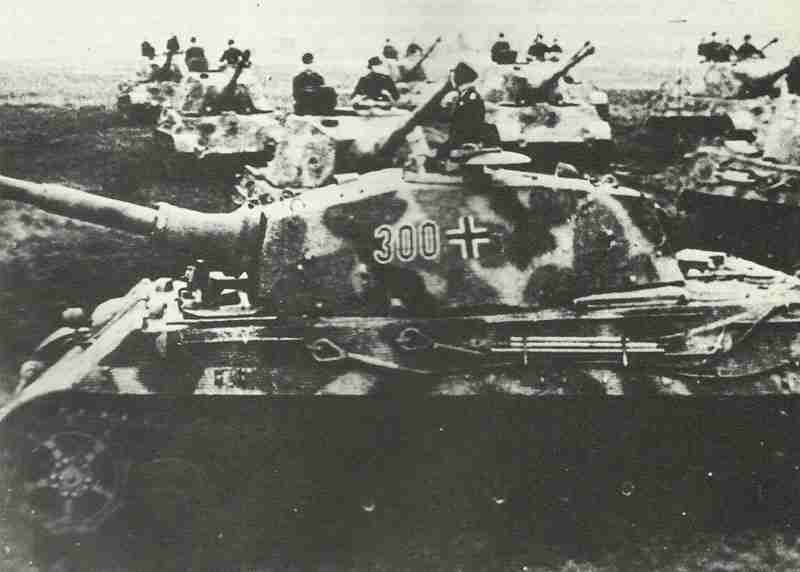
German Orders of Battle November 1944
Table of Contents
The German evacuation of Greece in 1944 was a significant event during World War II, marking the end of the Nazi occupation of the country.
Overview
Germany had occupied Greece since April 1941. By 1944 however, the Allied forces were advancing in Europe, and the German military position in the Balkans was becoming untenable.
Operation ‘Maigewitter’:
This was the codename (English: ‘May thunderstorm’) for the German withdrawal from Greece.
The evacuation began in September 1944 and lasted until November.
Reasons for withdrawal:
Advancing Soviet forces in Romania and Bulgaria threatened to cut off German troops in Greece. The German high command decided to redeploy forces to more critical fronts.
Resistance activities:
Greek resistance groups, particularly ELAS (Greek People’s Liberation Army), intensified their attacks on retreating German forces. British and American forces supported the Greek resistance with supplies and air support.
Route of withdrawal:
German forces retreated northward through Yugoslavia and Hungary. The evacuation involved both land and sea routes.
Destruction and atrocities:
As they withdrew, German forces often engaged in scorched earth tactics, destroying infrastructure and supplies. There were numerous instances of reprisals against Greek civilians during the withdrawal.
Liberation of Athens:
Athens was liberated on October 12, 1944, marking a significant milestone in the German evacuation.
Aftermath:
The German withdrawal left a power vacuum in Greece, contributing to tensions that would lead to the Greek Civil War (1946-1949).
Some German troops were left behind (e.g. on Crete) and surrendered later to Allied forces.
Strategic implications:
The evacuation allowed Germany to reinforce other fronts but effectively ended their presence in southeastern Europe.
The German evacuation of Greece was a complex operation that marked the end of a brutal occupation and set the stage for post-war political conflicts in the country. It was part of the broader German retreat from the Balkans as the tide of war turned against the Axis powers.
Schematic layout of the German Wehrmacht from November 26, 1944
The deployment and distribution of the divisions of the Wehrmacht and subordinate units of allies after the German withdrawal from the Southeast Balkans on 26 November 1944.
There are:
VG Division the newly introduced Volks (People’s) Grenadiers Divisions.
Inf.Div. is infantry division.
Ground based infantry division is an infantry division which is normally used as fortress or coastal defense unit and therefore has none or only few means of transport.
Panzer Div. (or Pz.Div.) is the armored (tank) division.
Panzergrenadier (or Pz.Gren.) Div is the motorized infantry division with tank elements.
Jaegers are light infantry units, mainly for anti-partisan warfare.
Security divisions are units to guard rail links, supply roads, bridges and so on and were used mainly in anti-partisan warfare.
Battle groups are the remaining battle-worthy units of worn out divisions.
zbV. are units for ‘special deployment’.
Eastern Front
Army Group F
(in Yugoslavia and the Aegean Sea)
Army | Corps | Divisions |
|---|---|---|
Army Group E (subordinated to Army Group F) | Commander Eastern Aegean | Fortress Brigade 939 (Rhodes), Fortress Brigade 968 |
Fortress Crete | 133 Fortress Div |
|
V SS Mountain | 369 Croat Inf.Div +1 Regiment of 118 Jaeger Div., SS-Regiment-Group 'Skanderberg' |
|
XXI Mountain | 181, 297 Inf.Div., Fortress Brigades 964 and 1017 |
|
LXXXXI zbV | 22 Inf.Div., 41 Fortress Div., Fortress Brigades 963, 966, 967, 969 |
|
XXXIV zbV | 7 SS-Mountain-Div. 'Prinz Eugen', 104. Jaeger-Div., 11. Luftwaffen-Field-Div. (on approach) |
|
2 Panzer Army (Staff XXII Mountain Corps arriving) | Group General Kübler | 118 Jaeger-Div -1 Regiment, Commander Syrmien (Korück 582), SS-Police-Mountain-Regiment 18, SS-Police-Regiment 5 |
LXVIII | Pz.Gren.Div. 'Brandenburg', remains mot.Grenadiers-Brigade 92, 31. SS-Paratroopers-Grenadiers Regiment, 44 Inf.Div. 'Hoch- und Deutschmeister', Regiments-Group 13 SS-Mountain 'Handschar', 1 Mountain Div. and 117 Jaeger-Div. arriving |
|
LXIX zbV | 1 Cossacks Div., Skis-Jaeger-Reserve-Regiment 1 |
|
XV Geb. | 264 ground based infantry Div., 373 and 392 Croatian Inf.Div. |
Army Group South
Army | Corps | Divisions |
|---|---|---|
Reserves | 153 Field Training Div. |
|
3 Hungarian Army | Reserves: VII and VIII Hungarian Corps (Staff) | 25 Hungarian Inf.Div. |
II Hungarian | 1 Hungarian River Brigade, Brigade Kesseve, remnants 23 Hungrian Reserve-Inf.Div. |
|
LXXII | 271 VG, 1 Hungarian Cavalry Div. |
|
6 Army (Reserves: Staff IX SS-Mountain-Corps) | Group General Breith (Staff III Panzer Corps) | Panzer-Group F, 22 SS cavalry Div., 8 SS cavalry Div. 'Florian Geyer', 1 Hungrian Panzer Div., 13 Panzer Div., 10 Hungarian Inf.Div., remnants 12 Hungarian replacements Div. |
VI Hungarian (subordinated to Group General Breith) | 20 Hungarian Inf.Div., 8 Hungarian replacements Div. |
|
LVII Panzer | battle group 357 Inf.Div., 23 Panzer-Div., 4 SS-Police-Grenadiers-Div., 18 SS-Pz.Gren.Div. 'Horst Wessel', 46 Inf.Div. |
|
IV Panzer | 1 Panzer-Div., 76 Inf.Div., remnants 2 Hungarian Panzer-Div. |
|
Army Group General Woehler (Staff 8 Army) | Reserves: IX Hungarian Corps (Staff) | 9 Hungarian Mountain-Jaeger-Div. |
XXIX | 24 Panzer-Div., 8 Jaeger-Div., 15 Inf.Div. (-1 Regiment), remnants 27 Hungarian light Div., 3. Mountain-Div. |
|
1 Hungarian Army ( subordinated to Army Group General Woehler) | Reserves: III Hungarian Corps (Staff) | remnants 6 Hungarian Brigade |
XVII | Group Schütz (15. Inf.Div. -2 Regiments), 2 Hungarian replacements Div., 24 Hungarian Inf.Div., 1 Hungarian Mountain Brigade |
|
V Hungarian | 16 Hungarian Inf.Div., 4 Mountain Div. |
Army Group A
Army | Corps | Divisions |
|---|---|---|
Reserves | Staff XXIV Panzer Corps | 8, 16, 17, 19, 20, 25 Panzer-Div., Div.-Staff zbV 601, 602, 603, 608 |
1 Panzer Army (Reserves: 154 Field training Div.) | XXXXIX Mountain | 100, 101 Jaeger-Div |
Group Gen.-Lt. Thiemann (subordinated to XXXXIX Mountain Corps) | 254 Inf.Div., 97 Jaeger-Div |
|
XI | 75, 253 Inf.Div., battle group 168 Inf.Div., 1 skis Jaeger |
|
17 Army | XI SS | 96, 208 Inf.Div., 78, 545 VG |
LIX | 544 VG, 359, 371 Inf.Div. |
|
XXXXVIII Panzer | 68, 302 Inf.Div. |
|
XXXXII | 72, 88, 291, 324 Inf.Div. |
|
LVI Panzer | 5 Hungarian Reserve Div., 17, 214 Inf.Div. |
|
4 Panzer Army | XXXXVIII Panzer | 68, 304 Inf.Div. |
XXXXII. | 72, 88, 291, 342 Inf.Div. |
|
LVI Panzer | 5 Hungarian Reserve, 17, 214. Inf.Div. |
|
9 Army | VIII | 6, 45 VG, 251 Inf.Div. |
XXXXVI Panzer | 337 VG, 73 Inf.Div. |
Army Group Center
Army | Corps | Divisions |
|---|---|---|
Reserves | IV SS-Panzer | |
2 Army (Reserves: 6 Panzer-Div.) | XX | 52 VG, 35, 252 Inf.Div. |
XXIII | 5 Jaeger-Div., 7, 299 Inf.Div., 541 VG |
|
XXXXI Panzer | 14, 102, 129, 292 Inf.Div. |
|
4 Army | Reserves | Div.-Staff zbV 605 (battle group Hauser), 5, 7 Panzer-Div., 18 Pz.Gren.Div. (under formation), Panzer-Brigade 102 |
LV | 547, 562 VG |
|
XXVII | 131, 203, Inf.Div., 286 Security Div., Police-Group colonel Hannibal |
|
Cavalry Corps | 3, 4 Cavalry Brigade, 558 VG |
|
VI | 50, 170, 367 Inf.Div. |
|
XXXIX Panzer | 28 Jaeger Div., 21 Inf.Div., Paratroopers-Panzer-Corps Hermann Göring (Panzer-Div. 1, Pz.Gren.Div. 2, minus Panzer-Group HG still at Western Front) |
|
3 Panzer Army (Reserves: 95 Inf.Div. in transfer to Memel) | XXVI | 1, 61, 69 Inf.Div., 349, 549 VG |
IX | 56 Inf.Div., 548, 561 VG |
|
XXXX Panzer | 551 VG, section Center Mitte (Grenadiers Regiment 1113), section West (Security Regiment) |
|
XXVIII | Div.-Staff zbV 607, Pz.Gren.Div. Grossdeutschland, 58 Inf.Div. |
Army Group North
Army | Corps | Divisions |
|---|---|---|
18 Army (Reserves: Div. zbV 300, Staff 52 Security Div.) | I | 87, 126 Inf.Div., battle group 30. Inf.Div. |
III SS-Panzer | 4 SS-Pz.Gren.-Brigade 'Nederland', 11 SS-Pz.Gren.Div. 'Nordland' |
|
X | 11, 263 Inf.Div., battle group 121 Inf.Div. |
|
II | 4, 14 Panzer-Div., 32 Inf.Div., battle group 31 VG |
|
Group Lt-Gen. Tomaschki | 563 VG, 83, 132, 225 Inf.Div. |
|
16 Army | XXXVIII | 205, 215, 290, 329 Inf.Div., 12 Panzer-Div. |
L | 24, 122, 289 Inf.Div., 12 Luftwaffen-Field-Div. |
|
VI SS-Volunteers | 93 Inf.Div., 19 SS-Waffen-Gren.Div. (Latvian No.2), Group Lt.Gen. Henze (Staff 21 Luftwaffen-Field) |
|
XVI | 81, 227, 281 Inf.Div. |
|
XXXXIII | remnants 23 and 218 Inf.Div., Staff 207 Security Div. zbV, Staff 201 Security Div. |
|
OKH Reserves | 520 VG (under formation), battle group 10 Pz.Gren.Div. (under replenishment) |
In the North
Army | Corps | Divisions |
|---|---|---|
10 Mountain Army | Reserves | MG-Skis-Brigade 'Finland', Cyclist Reconnaissance Brigade 'Norway', transfer to Denmark 6 SS-Mountain-Div. 'Nord' |
XXXVI Mountain | 163, 169 Inf.Div., Grenadiers-Brigade 193, 230 ground based Inf.Div. |
|
XIX Mountain | 2, 6 Mountain Div., 210 ground based Inf.Div., Grenadiers-Brigade 388 |
|
XVIII Mountain | Div.-Groupe K (Div. zbV 140), 7 Mountain Div., Mountain-Jaeger-Brigade 139 |
|
LXXI | 199 Inf.Div., 270 ground based Inf.Div., Fortress-Brigade Lofoten |
|
Army Command AOK Norway (Reserves: Panzer-Brigade 'Norwegen') | XXXIII | 14 Luftwaffen-Field-Div., 702 Inf.Div., 295 ground based Inf.Div. |
LXX | 274, 280 ground based Inf.Div., 710 Inf.Div. |
|
Wehrmacht Commander Denmark | 160, 166 Reserve-Inf.Div., 233 Reserve-Panzer-Div., under formation 560 VG |
Western Front
Army Group H
Army | Corps | Divisions |
|---|---|---|
6 Panzer-Army (Reserves Commander OB West) | I and II SS-Panzer | |
other Reserves OB West | Div.-Staff zbV 604, 62. VG (arriving) |
|
whereabouts unknown | 462 VG, 49 Inf.Div., 70 ground based Inf.Div. |
|
Marine-Oberkommando West (Nayy Command West in French port fortresses) | XXV (fortress Lorient) | 319 ground based Inf.Div., remnants 265 ground based Inf.Div., battle group 226 ground based Inf.Div. |
15 Army | Reserves | 719 ground based Inf.Div., 59 ground based Inf.Div. (in removal) |
XXX zbV | battle group 346 ground based Inf.Div. |
|
LXXXVIII | 711, 712 ground based Inf.Div., 6 Paratroopers Div. |
|
1 Paratrooper Army | Reserves: LXVIII (Staff) | Battle group 85 Inf.Div., 363 VG |
II Paratroopers | 190 Inf.Div., battle group 84 Inf.Div. |
|
LXXXVI | 7 Paratroopers Div., 180 Inf.Div., Div. zbV 606 |
Army Group B
Army | Corps | Divisions |
|---|---|---|
5 Panzer-Army | Reserves | 246 VG, 256 Inf.Div., 10 SS-Panzer-Div 'Frundsberg' |
XII SS | 176 Inf.Div. |
|
XXXXVII Panzer (subordinated to XII. SS-Corps) | 9, 15 Panzer-Div., 183 VG |
|
LXXXI | 12, 47, 340 VG, 3 Pz.Gren.Div. |
|
7 Army | Reserves: LIII, LXXXV zBv, LVIII Panzer | 2 Panzer-Div (replenishment), 116 Panzer-Div, 326 VG, 276 and 352 VG (arriving) |
LXXIV | 89, 275, 344 Inf.Div., 272, 277 VG |
|
LXVI | 18, 26 VG |
|
LXXX | 353 Inf.Div., 212 VG |
Army Group G
Army | Corps | Divisions |
|---|---|---|
1 Army | Reserves: LXXXIX Corps (Staff) | 245 ground based Inf.Div., 553 VG, 256 VG (arriving) |
LXXXII | 416 Inf.Div., 21 Panzer-Div., 19 VG |
|
XIII SS | 48 Inf.Div., 347 ground based Inf.Div., 36, 559 VG, 11 Panzer-Div, 17 SS-Pz.Gren. 'Götz von Berlichingen' |
|
Higher Commander Vosges | Group Bayerlein (from 361 VG and Panzer-Lehr-Div), battle group 25 Pz.Gren.Div. |
|
19 Army | LXIV | 708 VG, 716 ground based Inf.Div. |
LXXXX | 16 VG, 269 Inf.Div. |
|
LXIII | 159, 189, 198, 338 Inf.Div., 30 SS-Gren.Div. (Russian No 2), Panzer-Brigade 106 |
Italy
Army Group C
Army | Corps | Divisions |
|---|---|---|
Army Group Liguria (staff LXXXVII Corps) | Reserves | 162 (Turkmenian) Inf.Div. -1 Regiment, Italian SS-Brigade (under formation) |
LXXV | 5, 157 Mountain Div., 34 Inf.Div., 2 Italian Inf.Div. |
|
14 Army (subordinated to Army Group Liguria) | Corps Lombardia | 3 Italian Inf.Div., elements 148 Inf.Div., elements 4 Italian Mountain Div. |
LI Mountain | 148 Inf.Div. -1 Regiment, 4 Italian Mountain Div. -1 Regiment, 232 ground based Inf.Div. |
|
10 Army | Reserves | 90 Pz.Gren.Div., 362 Inf.Div. |
I Paratroopers | 94 Inf.Div., 4 Paratrooper Div., 16 SS-Pz.Gren.Div. 'Reichsführer SS' |
|
XIV Panzer | 65, 98, 334 Inf.Div., 29 Pz.Gren.Div., 42 Jäger-Div., 1 Paratrooper Div |
|
LXXVI Panzer | 278, 305, 356, 715 Inf.Div., 26 Panzer-Div., battle group 20 Luftwaffen-Field-Div. |
|
LXXIII | 114 Jaeger-Div., 1st Regiment of 162 (Turkmenian) Inf.Div |
|
LXXXXVII Corps zbV | = | 71 Inf.Div. (in transfer to Commander Southeast), 188 Reserve-Mountain-Div., 237 ground based Inf.Div. |
Reserves and formations under creation
| Divisions | |
|---|---|
| subordinated to OKW (HQ Wehrmacht) | 3 and 5 Paratroopers Div. (replenishment) |
| Chief of Armament and Commander of the Reserve Army (all in formation or replenishment) | 9, 79, 167, 257 VG, 182 Reserve-Inf.Div., 14 Waffen-SS-Div. (Galician No1), 15 Waffen-SS-Div. (Latvian No1), 20 Waffen-SS-Div. (Estonian No1), 27 SS-Volunteers-Pz.Gren.Div. 'Langemarck', 28. SS-Volunteers-Pz.Gren.Div. 'Wallonien', French SS-Brigade, 211 Inf.Div., 1 Italian Inf.Div. |
See also: Germany Army Unit Organisation 1942-45.
The German retreat from the Balkans
The annihilation of the German army group Center in the summer of 1944 had led to a deep Soviet salient in the middle of the Eastern Front and had only come to a standstill before Warsaw, which was also caused by the Western-oriented Warsaw Uprising in August 1944 and which Stalin hoped Hitler would suppress.
Therefore, the Red Army continued its offensives on the flanks. At that time, Romanian and German troops held a shaky defensive front in Moldova in the south after the Soviet spring offensives. The German units were constantly reduced by deductions to other, threatened front sections in the north, while the Romanians had already lost their best divisions at Stalingrad in the winter of 1942-43. Further losses occurred during the fighting and evacuation of the Crimea in 1944.
As a result, both the Romanian army and the political leadership of the country had lost their will to continue the war. The army had already collapsed internally and officers and men were no longer prepared to continue fighting and the slightest reason would lead to disintegration.
In the meantime the Soviets had drafted, trained and politically indoctrinated several hundred thousand men in the regained Ukrainian territories in the last months, so that the 2nd and 3rd Ukrainian Front under Malinovsky and Tolbuchin were fully prepared for a new fighting.
The Soviet offensive on 20 August against the Romanian 4th and 3rd armies, left and right of the German 6th Army, met practically no resistance; the Romanian troops simply refused to fight.
Thus, the 18 divisions of the reconstituted German 6th Army were trapped and destroyed for the second time after Stalingrad. The remains of the German 8th Army had to retreat to the Carpathians.
In a few days the Russians overrun Romania and the Wehrmacht lost over 380,000 men within two weeks. On 5 September 1944 the Soviet Union declared war on Bulgaria and on 8 September the Red Army crossed the border. On the same day Bulgaria declared war on Germany and the Bulgarian troops, which had not dissolved before, fought on the allied side.
On the one hand, the Hungarians fought more bitterly, harder and more effectively than ever before in World War II, when they were finally able to fight the hated Romanians.
Nevertheless, Hungary’s regent, Admiral Horthy, now began to stretch out peace antennae to Moscow. On September 24 he sent envoys to Moscow and planned to leave the Axis Alliance on October 15. But the Hungarian leadership screwed this up just like its Italian colleagues a year earlier.
German special forces arrested Horthy and German troops occupied the capital Budapest. A new regime was established under Ferenc Szalasi, the leader of the Hungarian Arrow Crossers. The Arrow Crossers were even more insane than the most devout Nazis, and many considered their leader to be a madman as well.
Thus, Hitler now had direct control over Hungary and with the enthusiastic help of Szalasi and his movement the most important task was tackled: the deportation of more than half a million Jews to the extermination camps from the only remaining refuge in Europe.
The dramatic developments in Budapest led to a long and bitter battle for Hungary, which lasted from October 1944 until the last days of the Second World War and resulted in enormous destruction and heavy losses for both sides. The effects of the collapse of Romania and the German troops there on the situation in Greece and neighboring Balkan regions were equally dramatic, but not so destructive.
When the first news of the coup that overthrew the Romanian dictator Antonescu reached the Führer’s headquarters on 23 August, the Commander-in-Chief Southeast, Field Marshal Maximilian von Weichs, was also there.
At the conference held on that day, Adolf Hitler made several decisions that significantly influenced German strategy and the general course of further warfare.
For years, Hitler had insisted that the German positions in Greece, Crete and the Aegean islands should be built up and reinforced with troops. When Italy capitulated in September 1943, German troops immediately occupied the Italian occupied territories in Greece and the Dodecanese Islands, which belonged to original Italian state territory before WW2.
Originally intended as a deployment area for further penetration into the Middle East, the German position there had for some time now the task of preventing Turkey from entering the war on the Allied side and at the same time ensuring the supply of chromium from there. Additional, for this reason, the Turks refused to give the Allies Air Force bases from which their planes could have more easily attacked the Romanian oilfields.
In the meantime, however, Turkey had broken off diplomatic relations with Germany on 2 August 1944. Romania was lost and the whereabouts of Bulgaria doubtful.
Therefore, the previous strategy was discarded there and under these new circumstances Hitler wanted the focus to be shifted to the defensive further north around the remaining German area of power.
The south of Greece was to be evacuated in the case of a hostile attack, for which it was essential that Bulgaria could not control and hand over to the Allies the only railway line running from Greece through Serbia. Some of the island garrisons in the Aegean had to be left behind, especially the numerically strong ones in Crete, while others could be evacuated.
In the case of Southeastern Europe, however, the local commander-in-chief was responsible for numerous delays in the evacuation ordered by the German leader.
Over a period of several weeks German garrisons were evacuated from most islands in the Aegean Sea and southern Greece. It was not until October, when the threat of a Soviet breakthrough from Bulgaria to the West began to emerge, cutting the crucial railway line through southern Yugoslavia to Greece, that the German commander von Weichs began to act on his orders.
In a protracted and carefully organized retreat, the German troops evacuated Greece, which they had conquered in 1941 with lightning speed and impressively during the Balkans Campaign. They withdrew to Macedonia to take up a defensive line at the southernmost end of the new Eastern Front in October.
The withdrawal began on October 10, Athens was evacuated on October 18, and at the end of the month the German troops left Thessaloniki. In Greece, almost all Jews had been deported to the extermination factories, but now the Germans left the country with an almost completely peaceful withdrawal, after the fall of Belgrade on 4 October had made clear their precarious situation further south.
The British quickly found themselves fighting against armed Greeks and not against the Germans. The occupation was soon followed by civil war, but the first two of three trials were behind the Greeks.
The Soviet Union and Great Britain had already decided that Greece would fall within the British sphere of interest, while Romania was left to the Soviet Union.
None of the great powers at that time was interested in questioning these agreements, while the war against Nazi Germany was still violent and bloody.
References and literature
Krieg der Panzer (Piekalkiewicz)
Der 2. Weltkrieg (C. Bertelsmann Verlag)
Zweiter Weltkrieg in Bildern (Mathias Färber)
A World at Arms – A Global History of World War II (Gerhard L. Weinberg)
Der Grosse Atlas zum II. Weltkrieg (Peter Young)





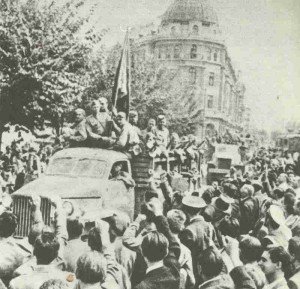
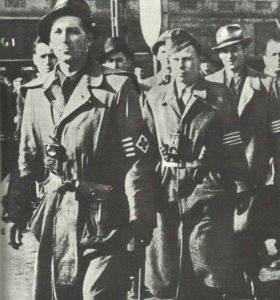
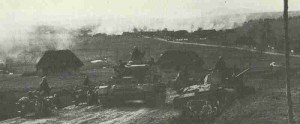
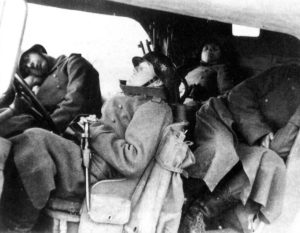
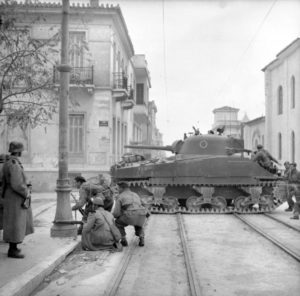
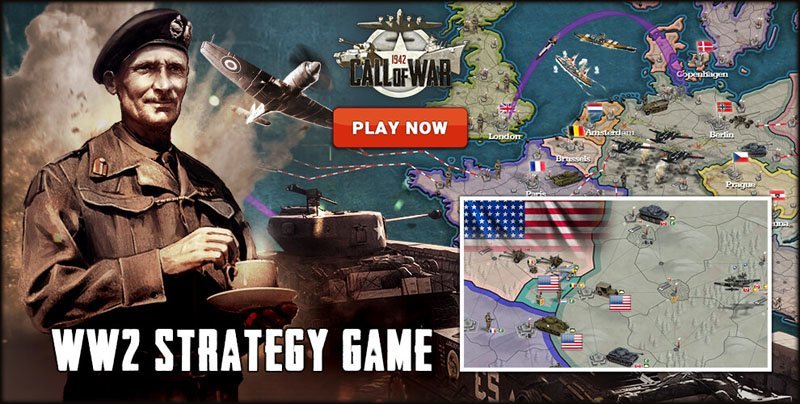



Greetings Crete
I have come aboard just these last hours, after discovering your excellent resource site.
For me, after extensive digging, find the greatest mind-boggling historical enigma is, why in the name of the Saints didn’t Catholic Poland, after successfully thwarting the Bolshevik locusts under Marshall Pulsidski, who enjoyed cordial relations with Germany do a suicidal U-turn after the Marshall’s death in 1935?….and form a secret pact with France, then at the end with Britain instead of going like Finland?
Slain te’ y Ya Mas
from a former ”lowest of the low” Canadian ‘Jager’.
hitler should’ve abandoned the Balkans soon after his failure to stop operation Bagration and D-Day (July 44). Everyone knew Romania was circling the drain and yet hitler demanded that 6th and 8th Armies remain there. One of the main reasons the Soviets made their main effort in the Ukraine in 1943-44 was to threaten the Axis allies in the Balkans. FM Manstein tried to warn hitler before he was sacked in April, 1944
The last 10 months of the war were a bloodbath for the Germans